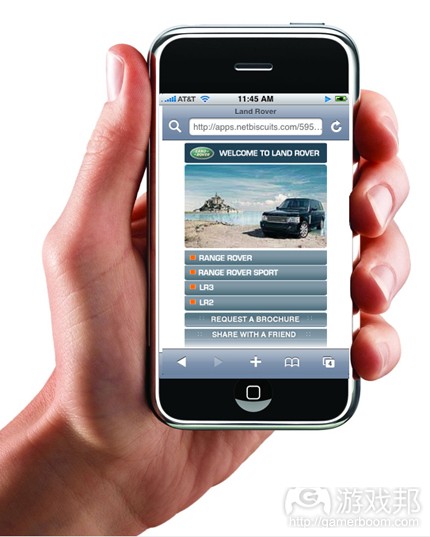主宰未来移动广告领域的5大发展趋势
作者:Neil Strother
今年,各商家在移动广告领域共投入约40亿美元。因而,尽管存在些许不同的看法,我们认为这已经是个接下来数年值得关注的领域。
要更清楚地了解移动广告将来的状况,先探索目前的情形是必要的。以下将是今后尤为突出的5大趋势:
更具关联性的行为匹配度。目前,手机广告商使用传统的广告匹配方法,即设备、用户群和环境。但是在未来5年的时间里,手机广告定位将与个人的行为和当前地理位置有更深的联系。比如,在线广告网络Adverline拥有AdNext服务器,可以在向移动用户传播广告时构建空间和时间的预测模型。该公司已经在韩国同COEX Mall测试了这项服务,发现70%的广可以告在合适的空间和时间上呈现。
逐渐成长的移动搜索。移动搜索广告已经成为广告投入的强大驱动力,谷歌目前大部分的移动平台收入便来源于此。在未来的5年内,这种情况依然会存在,因为人们会继续使用移动设备来搜索产品和服务。可能发生改变的是,因为有了更准确的定位,搜索广告商会根据地点、关键词和更加准确的预测引擎提供更具关联性的广告。
更好的分析性。现在,衡量移动广告营销活动效果的工具缺乏广告商所期盼的完善性。移动营销协会和互动广告局等其他组织已经出台了优秀的指导意见。但是这些已经仍然处在发展变革之中,并非所有人都遵循同样的原则。在未来5年内,这一标准将会变得成熟。企业会更加认同所衡量的数据,分析移动广告活动的有效性也不再是个大麻烦。
更好的互动性。今天的多数移动广告是以相对简单的文字或条幅的形式传播。它们可以被点击,但是互动性不强。虽然也能使用富媒体广告,但是出于许多原因(游戏邦注:需要更高的成本,并非所有的设备都能够恰当呈现等),富媒体广告并没有被广泛采用。在5年的时间里,互动广告将变得更为普及,用户将会以目前还未被发掘的方式扩展和操控广告。这会使某些富有创意的想法绽放出光芒。而且,现实增强之类的技术会让消费者同品牌和周围环境更具互动性。想象下,你可以用手机玩到由可口可乐赞助,并且基于当前环境的Zynga游戏。
手机社交成为“个人云”。今天,Foursquare和Gowalla等服务已经兼容了手机和社交两个领域。在未来5年内,这项功能很可能演变成某些斯坦福大学研究人员提出的“个人云”概念,也就是无论我们前往何处,个人数据都时刻围绕在身边。而且可以将这些数据与任何我们选定的人分享,也可以用来购买物品等。精明的广告商将会利用这个趋势提供相关的有价值服务,同时又保护用户的隐私。
同时,谷歌、苹果和Millennial Media等公司目前正统治着手机广告领域,这些大公司有些会继续在未来5年内发挥其影响力,而有些会逐渐淡出这片领域或者被收购。(本文为游戏邦/gamerboom.com编译,拒绝任何不保留版权的转载,如需转载请联系:游戏邦)
5 trends that will shape the future of mobile advertising
Neil Strother
Spending in the mobile advertising space will be approximately $4 billion worldwide this year, so despite some perceptions to the contrary, we can safely assume it’s an area to watch in the coming years.
To get a clearer picture of mobile advertising’s future, it helps to first explore the current landscape. Five trends in particular stand out:
More-relevant behavioral targeting. Currently, mobile advertisers use traditional methods of ad targeting: device, demographic group or context. But in five years, mobile ad targeting will become more relevant to a person’s behavior and current location. For instance, online advertising network Adverline has an AdNext server that builds a prediction model of spatial and temporal relevance for delivering ads to mobile users. The company has tested this with the COEX Mall in South Korea, and it found a 70 percent confidence level that ads displayed are spatially and temporally relevant.
Growing mobile search. Mobile search advertising is already a big driver of ad spending; this is where Google currently makes much of its money in mobile. In five years, this will still be the case, as people continue to use mobile devices to search for products and services. What will change is that, coupled with better targeting, search advertisers will deliver more relevant ads based not only on location and relevant keywords but also on more accurate predictability engines.
Better analytics. Right now, the tools for measuring mobile ad campaigns lack the sophistication that advertisers expect. The Mobile Marketing Association and other groups, such as the Interactive Advertising Bureau, have set up good guidelines. But these are still evolving, and not everyone plays by the same rules. In five years, the standards will have matured. Companies will agree more about what gets measured, and analyzing mobile campaign effectiveness will not be as big of a hurdle.
Greater interactivity. Most mobile ads today are delivered as relatively simple text or banner formats. They are clickable but not very interactive. Rich-media ads are available, too, but they are not as widely deployed for a variety of reasons: more cost, and not all devices render them well. In five years, interactive ads will be common, and users will be expanding, collapsing and manipulating them in ways that are still unfolding. This will unleash creative minds to show off their capabilities. Also, technology like augmented reality will make the interaction with brands and the world around consumers more interactive: Imagine looking at your mobile screen and playing a Zynga game sponsored by Coca-Cola, based on your physical surroundings.
Mobile-social as the “personal cloud.” Today the mobile and social worlds already collide with services like Foursquare and Gowalla. In five years, though, this functionality will likely evolve into what some Stanford researchers suggest is the personal cloud, which will be personal data that surrounds us wherever we go. It will also be shareable with whomever we choose and will be used to make purchases, among other things. Savvy advertisers will leverage this trend with relevant offers that provide value but still respect user privacy.
Meanwhile, companies like Google, Apple and Millennial Media currently rule the mobile advertising space, and while some of those will continue to have an impact over the next five years, others leading the way today will fade away or be acquired. To read about these, as well as more trends to watch, please see “The future of mobile advertising, 2011-2016” at GigaOM Pro (subscription required). (Source: Gigaom)








































 闽公网安备35020302001549号
闽公网安备35020302001549号